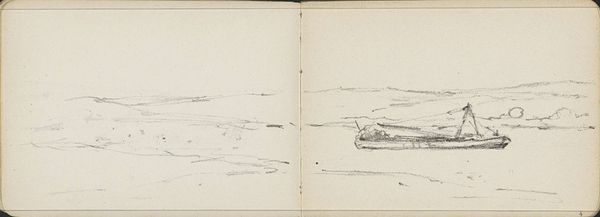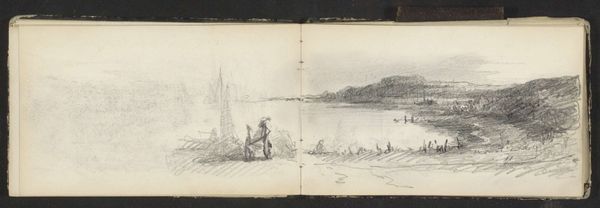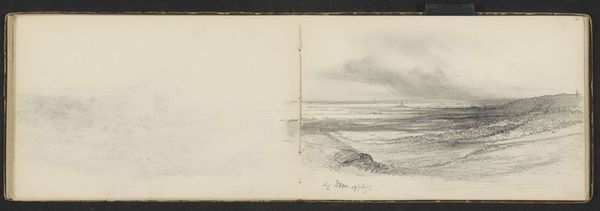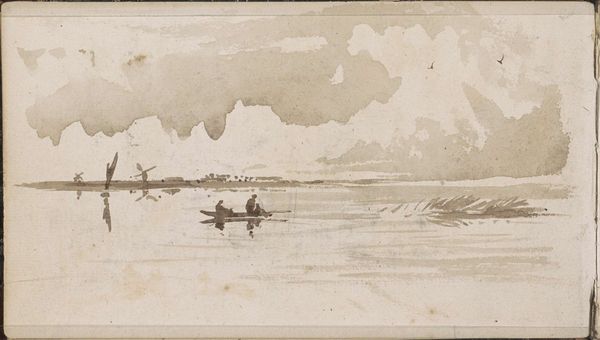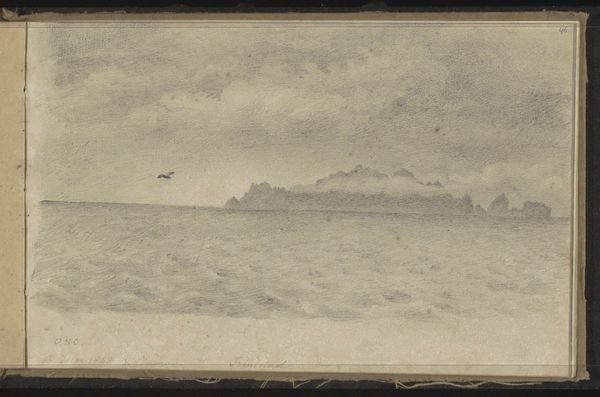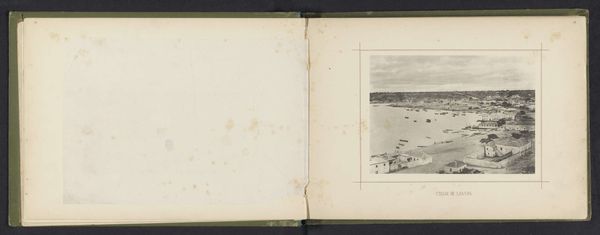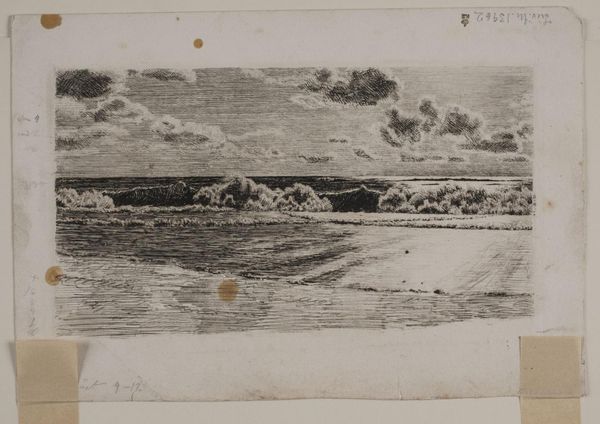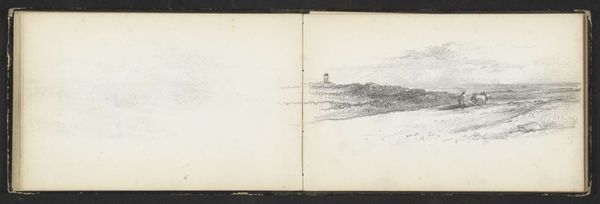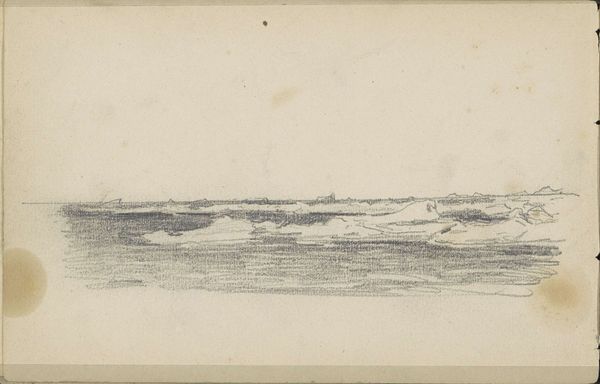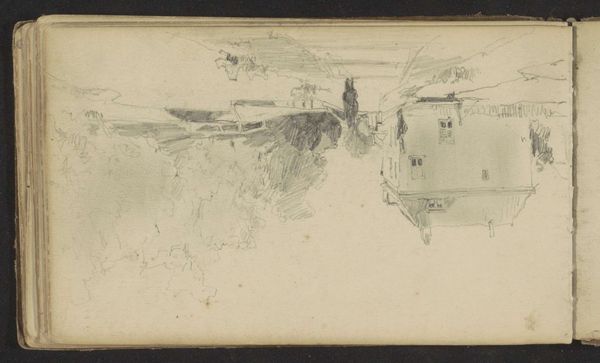
drawing, pencil
#
drawing
#
impressionism
#
landscape
#
coloured pencil
#
pencil
Copyright: Rijks Museum: Open Domain
Curator: Here we have Maria Vos's "Roeiboten op een rivier," or "Rowboats on a River," thought to have been created between 1834 and 1906. It is currently held at the Rijksmuseum. Editor: There's such quiet melancholy to it, even in the hurried pencil strokes. The open sketchbook format really contributes to that sense of fleeting observation. Curator: Indeed, the very visible toolmarks offer an insight into its construction and possible functions as preparatory material for the artist. I wonder if the sketchbook was of standard size, readily accessible to amateur artists. What kind of paper was used and what constraints were imposed? This piece reveals how even a quick sketch required a series of conscious artistic choices. Editor: It's true that the lack of embellishment points to utilitarianism. However, despite being just a sketch, I am struck by how this raw image captures a very particular mood. Water is an age-old symbol of purification, of transitions, of the subconscious. It may suggest an openness or uncertainty reflected in the figure rowing on this river. What do you see in the composition itself? Curator: As an artist in her time, one ponders what the materials represent in accessing, producing and, potentially, selling artistic skill? Was she reliant on new pigments of the age or on using locally accessible supplies? Does this choice imply an aspiration, restriction or unique method within her practice? The materiality carries with it so much insight. Editor: For me, that lone rower speaks volumes beyond mere boating; it resonates with humanity's perennial search for meaning. This isn’t just a simple drawing. It reflects our ongoing narrative about purpose and movement. The blurred, undefined background of the river almost reinforces the uncertainty that the human condition can represent. What do you think of this river landscape within a historical context? Curator: Well, for me, it is equally significant how landscape, historically romanticized, could be so quickly produced and consumed, due to these accessible artistic techniques. This shows the impact and effect these new drawing techniques may have had during the rise of impressionism and everyday art. Editor: Seeing the image anew, thinking about materials and method has broadened my understanding and respect for Maria Vos and how she, too, contributes to that flow of shared, unspoken stories. Curator: Indeed, focusing on artistic decisions around artistic mediums reveals unexpected aspects within Maria Vos's landscape and provides insightful historical material context that may sometimes be forgotten.
Comments
No comments
Be the first to comment and join the conversation on the ultimate creative platform.
